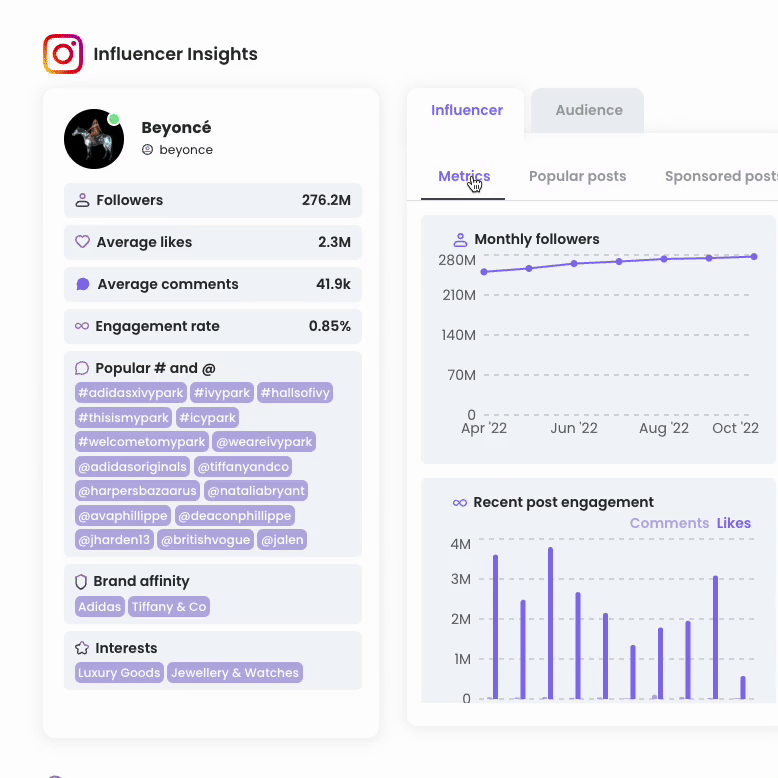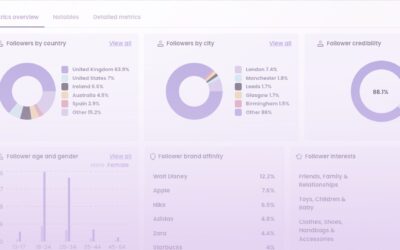Finding suitable influencers on Instagram is not an easy task. In 2023, the number of Instagram accounts is projected to reach nearly 1.2 billion. How to find the right influencers for your Instagram influencer marketing campaigns?
In general, there are three ways to find Instagram influencers as a brand: from your own customer base, searching manually on Instagram, or using influencer marketing platforms (we excluded Google search from this list). Let’s review the pros and cons of each option!
a) from your customer base;
b) manually searching on Instagram;
c) using influencer search tools
How to choose influencers?
Before you start: create an “ideal influencer” checklist
The key to a successful influencer campaign: choosing the right influencers. We recommend creating the “right influencer” checklist before you start scouting for influencers. That might include:
◻️ audience that matches your target group;
◻️ values that match your brand values;
◻️ no fake followers or fake engagement;
◻️ no previous collaborations with competitors.
Done? Let’s get down to business 👇🏼
a) Find Instagram influencers from your customer base
A happy customer is the best influencer. Therefore, you probably want to find relevant influencers who already use your products and are willing to sincerely recommend your brand to their followers. Therefore, you should start by looking at your own customer base: are there any influencers?
You can also check your brand’s social media channels: who are the people who tag you in their posts or stories and already recommend your brand to their followers? If you’ve previously done some social media marketing, you probably have some influencers following you.
Using Promoty, you can also see suggested influencers for your brand, based on who follows you, who has been engaging with your content, or who have you previously worked with.

Suggested influencers on Promoty (try it out for free)
b) Manually finding influencers on Instagram
Of course, you can also search for influencers manually on Instagram. It takes a lot of time – but in a way, might be the easiest way to start! In general, there are three main ways to search for influencers on Instagram: relevant hashtags, locations, and similar profiles. Let’s go over each of these!
Start with checking hashtags and locations related to your brand or industry. For example, if you’re looking for UK influencers, you can search for…
▸ influencer-related hashtags, such as #londoninfluencer, #londonblogger, and #londonfashionblogger;
▸ hashtags containing cities or countries – such as #london, #manchester, and #unitedkingdom;
▸ hashtags like #advertising and #collaboration (also, in the local language);
▸ local cities, sights, popular cafeterias, bars, and restaurants where influencers go to.
When you’ve found an influencer you’d like to work with, use the “similar profiles” function to find more potential influencers to work with! For that, click on the little 🔽 button next to the “Message” button on their profile when on mobile or the little arrow button next to “Follow” when on desktop, and you will see a list of potential influencers!
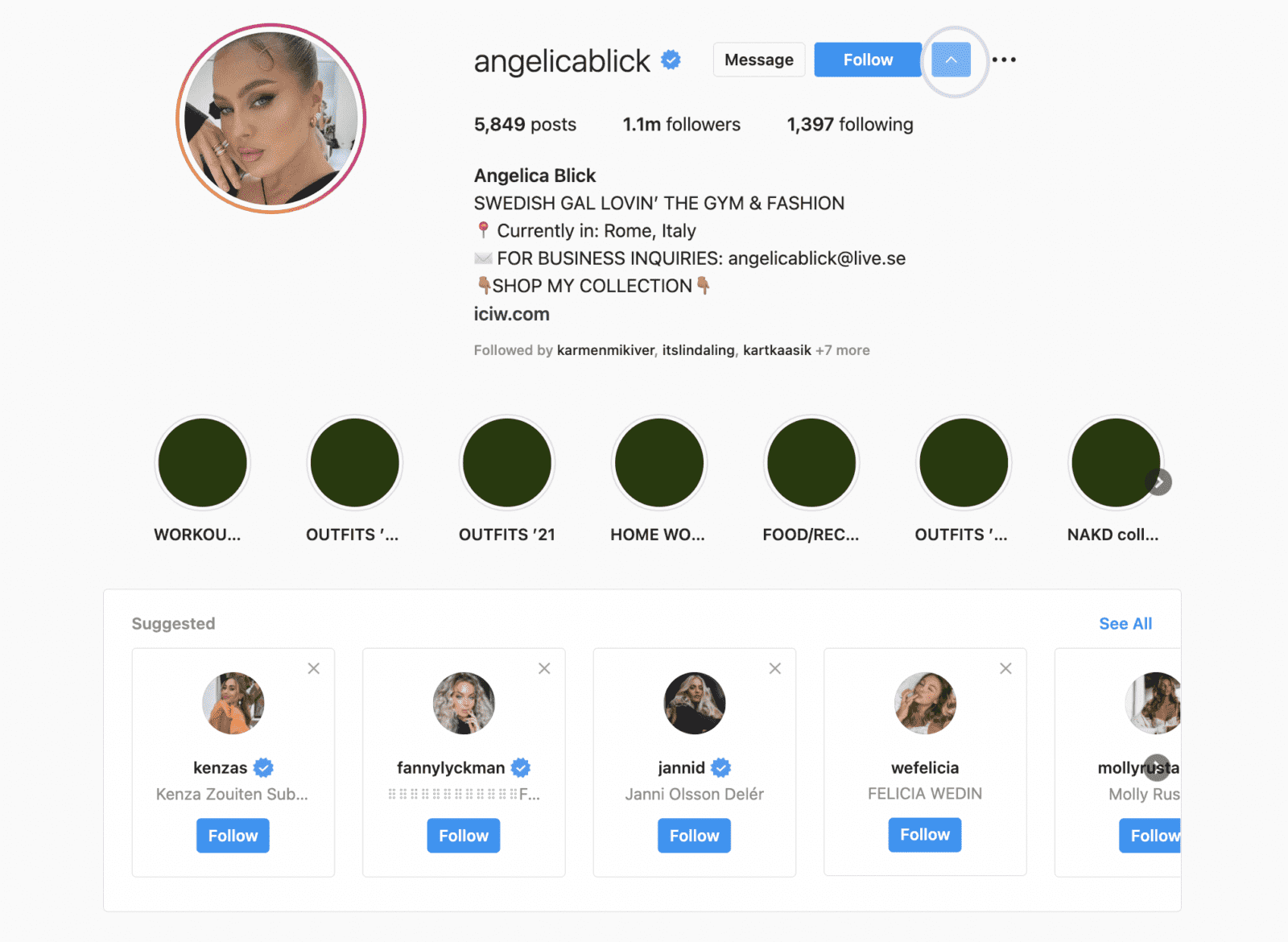
Similar Instagram users to @angelicablick
c) Using influencer search tools
Finding the right Instagram influencers manually is massively time-consuming – for example, when we started Promoty, it took us more than 40 hours to find our first 100 influencers for your first influencer marketing campaign! (This is also one of the reasons why we created Promoty.)
Using our influencer search tool, you can filter our global database of influencers by their size, engagement rate, age, gender, number of followers, or followers’ demographics (age, gender, location), and other criteria.
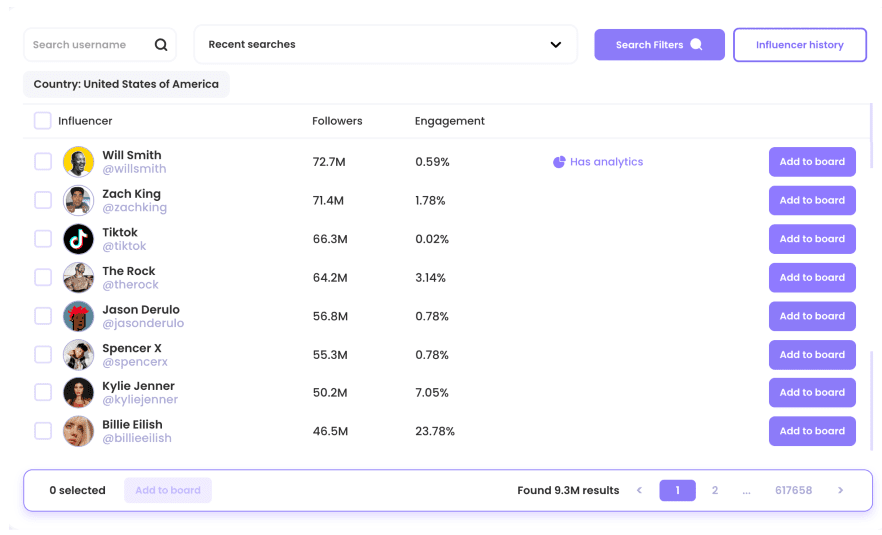
How to choose the right influencers?
Choosing suitable influencers is not an easy task either: in 2023, the number of Instagram accounts is projected to reach nearly 1.2 billion. How to choose the right social media creators for your influencer marketing campaigns?
Here’s a full guide on identifying influencers for your brand, based on their content, previous collaborations, Instagram statistics, audience demographics, followers’ quality, and other criteria! 👇🏼
1. Influencer’s story and values
One thing is sure: you shouldn’t choose influencers based on the numbers only. Instead, open the influencer’s profile to check if the influencer’s values fit with your brand values and brand voice..
For example, if an influencer is known for buying their daily coffees in single-use plastic cups, and shopping in fast fashion retail stores, collaboration with a sustainable brand would feel out of place. As social media users are becoming more aware of that kind of “fake” collaborations, influencer campaigns with poorly-chosen creators might do more harm than good for the brand.
Here are some questions you may ask yourself:
• Has the influencer previously talked about topics that are important to the brand?
• What kind of lifestyle do they promote?
• What values are they representing?
• Would you like to have that person represent your brand?
2. The quality of the influencer’s visuals
The importance of the photo quality depends primarily on whether the brand wants to use the visuals on its social media (so-called influencer-generated content). If they do, the influencer’s visual style should match the brand’s.
However, marketers should keep in mind that most influencers have a well-established visual style. For example, suppose all the content influencer’s previous photos taken with the phone are dark and slightly grainy. In that case, you shouldn’t expect your collaborative post to come in light colors and high quality.
When it comes to collaboration visuals, many marketers prefer photos where the product is in use or in the natural environment to posed “me and the product” photos. Another aspect to keep in mind is that photographs with a human face tend to evoke more emotion and thus produce better results.
3. Previous collaboration posts
You should also check their collaboration posts with other brands: are they personal, authentic, and informative? Is there enough storytelling or does the influencers’ feed rather look like an advertising catalog? Are the posts getting authentic engagement and positive feedback?
Ideally, you want an authentic influencer who works with brands once in a while – but whose content is mostly focused on sharing their life. The fewer branded posts on an influencer’s profile, the more carefully they are likely to choose their partners and the more authentic content you can expect.
Another thing you should make sure of is whether the influencer has previously worked with competing brands. In this case, the influencer may not be a good choice as alternating between two competing brands gives the impression of being dishonest and may indicate that the influencers are doing collaborations for money only.
Here, influencer marketing software comes in handy again. For example, on Promoty you can see previous sponsored posts as well as the most used hashtags and mentions – which helps you to quickly grasp the brands the creator has previously worked with.
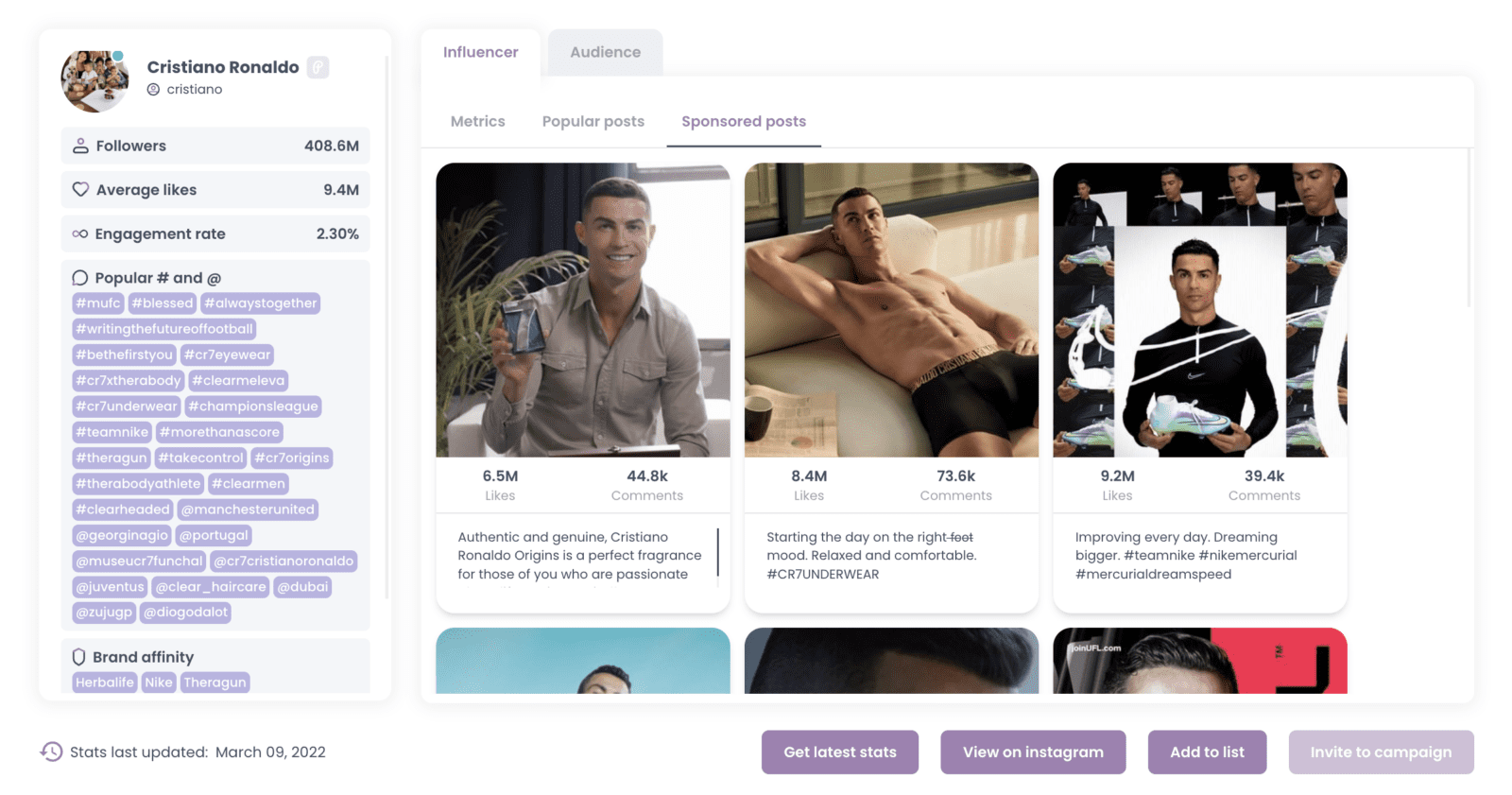
4. Influencer’s social media statistics
One of the most common mistakes in influencer marketing is focusing on the Instagram followers’ number. Instead, you should check their reach – that shows how many people their content is actually reaching.
Another important metric is the engagement rate: the percentage of influencers’ followers who are liking, commenting, or saving their posts. A high engagement rate means that the influencer’s followers are sincerely interested in them and communicate with them actively.
At the same time, you should keep in mind that the higher the number of followers, the lower the engagement rate – for large influencers, 3-5% engagement is quite normal. That’s why we always encourage brands to work with Instagram micro- and nano-influencers.
Alternatively, you can evaluate influencers’ engagement by comparing their video views, views of their Instagram stories, Reels, and TikTok videos, to the follower number.
5. Audience demographic, interests, and brand affinity
Another important thing to check is the followers’ demographics: location, age, and gender. This is especially important for local brands: for example, for a Stockholm-based business, it’s important to make sure that a large number of influencers’ followers are from Stockholm.
One way to get an overview of the followers’ demographics would be to ask the influencer to send a screenshot of their account from the Audience tab. Another way is to use influencer analytics tools.
6. Quality of the influencer’s followers
How to know if the influencer has real followers? The easiest thing to do is open the influencer’s followers list: if there are hundreds of empty profiles with foreign names, it’s suspicious. It’s also worth looking at the comments: are these authentic comments or rather bot comments like “Cool post, check out my profile”
Fortunately, there are a bunch of free tools to check for fake followers! If you want more insights on the influencer audience, use an influencer marketing tool like Promoty: which also shows you the followers’ and likers’ credibility, engagement rate, and audience location of each Instagram influencer. It not only helps you to avoid fake influencers – but also choose the best influencers for your target audiences.
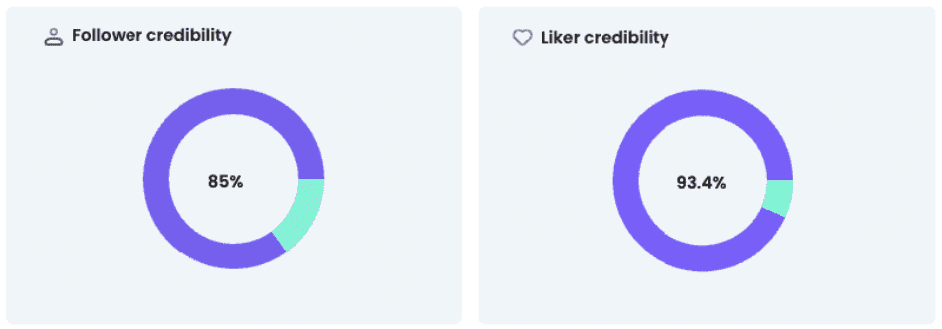
To sum it up: the best ways to find Instagram influencers 👀
In general, there are 3 ways to discover influencers for your influencer marketing campaigns:
from your customer base (or social media followers), searching manually on Instagram, or using influencer marketing tools. We obviously recommend the third option: you could save hours of time, see much more information about each creator and thus, find better influencers.
